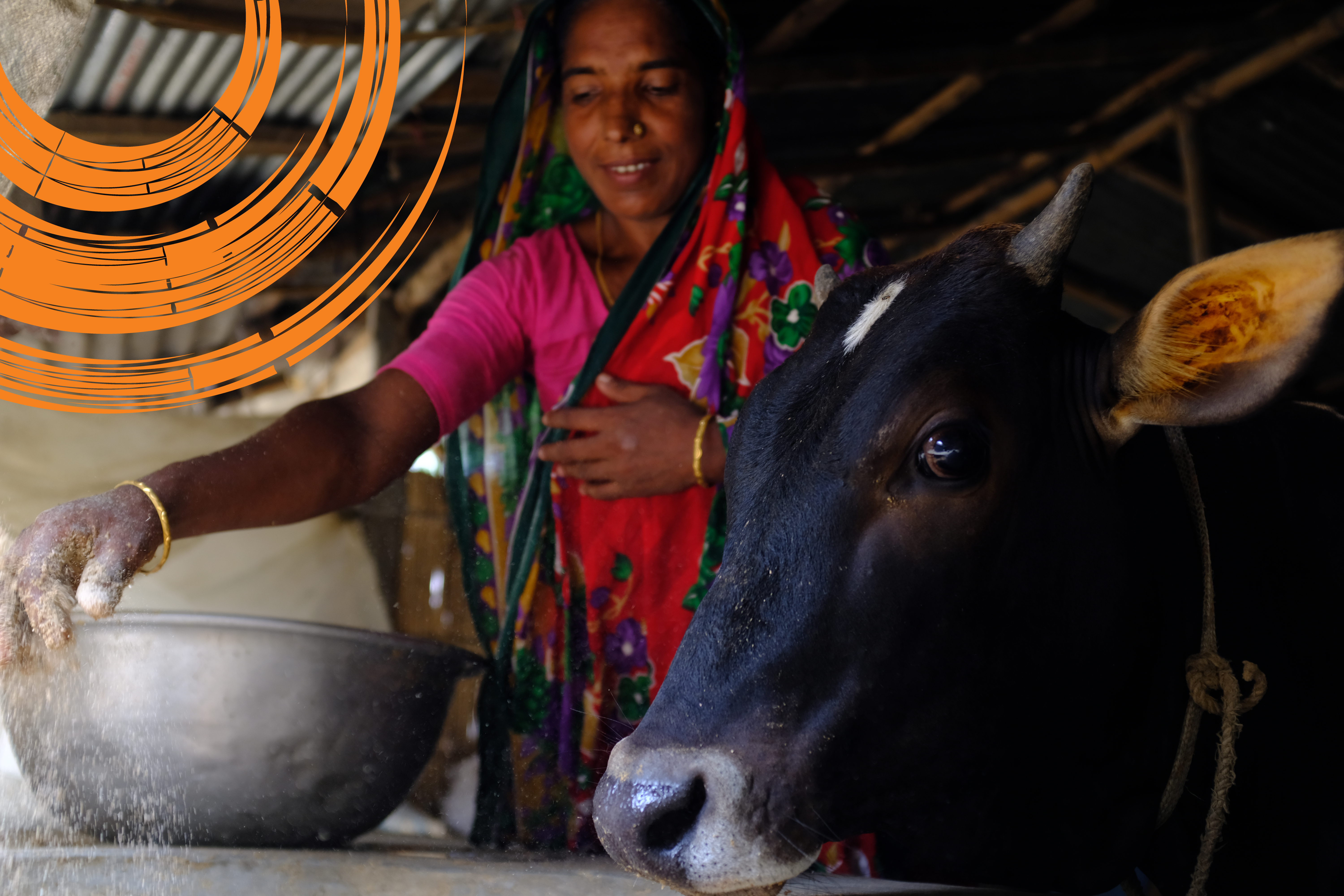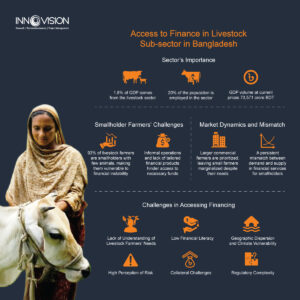
The livestock sector in Bangladesh is a critical component of the economy, contributing approximately 1.8% to GDP and providing employment for around 20% of the population. It plays a vital role in ensuring food security and nutrition by supplying essential animal protein. However, many livestock farmers, particularly smallholders, face significant barriers to accessing finance. The informal nature of their operations and their classification as small and medium enterprises (SMEs) with limited capital hinder their financial opportunities.
A study by LightCastle Partners reveals that 93% of livestock farmers operate at the smallholder level, often with few animals, which makes them particularly vulnerable to financial instability. This vulnerability is further exacerbated by climate change and environmental shocks, such as floods, that can lead to substantial losses due to a lack of suitable insurance products.
Access to finance is crucial for the livestock sector, enabling farmers to invest in essential resources such as better breeds, feed, and veterinary care. These investments enhance productivity and build resilience against risks like climate change and market fluctuations. Despite this importance, the sector faces a significant financing gap. According to BIDS, only about 4.5% of smallholder farmers have access to credit, which is considerably lower than the rates seen in crop production. This limited access to finance hinders growth, sustainability, and the overall contribution of the livestock sector to food security and economic development.

One of the primary challenges is the mismatch between financial institutions and the needs of livestock farmers. Many financial institutions do not fully understand the specific financial requirements of these farmers, leading to a lack of tailored loans and financial products. This gap is exacerbated by the sector’s inherent risks, including price fluctuations, disease outbreaks, and natural disasters, which make lenders hesitant to offer credit. As a result, smallholder farmers are left without the necessary financial tools to sustain and grow their operations.
Moreover, low financial literacy among many farmers makes it difficult for them to navigate available financial products. They often struggle to understand loan options or manage finances effectively, limiting their ability to access credit. Collateral challenges persist, as smallholders frequently lack sufficient assets to secure loans, creating additional barriers to financial inclusion.
Geographic challenges add to the complexity. Many livestock farms are located in remote, climate-vulnerable regions, making it difficult for financial institutions to reach these farmers. Additionally, the sector’s diversity—from dairy farming to poultry—requires specialized financial products, yet such options remain limited. Without tailored financial services, smallholders find it challenging to access the resources needed to scale their operations.
The financial risks to the livestock sector are further compounded by environmental disasters. In 2024, floods in the Feni district wiped out over 38,000 cows, 129 buffaloes, 15,604 goats, and millions of chickens, devastating smallholder farmers. Without access to insurance, these losses fall entirely on farmers, forcing many into a cycle of poverty. This highlights the urgent need for insurance coverage and risk management solutions within financial products for livestock farmers.
While informal lending and microfinance institutions (MFIs) are available, they often come with high interest rates, making them unsustainable in the long term. The commercialization of Bangladesh’s livestock sector further complicates the landscape, as financial institutions tend to focus on larger, more commercial farms, leaving smallholders underserved.
Despite these challenges, promising solutions are developing. New market integrators, such as iFarmer and Wegro, are introducing models that connect small farmers with better markets, inputs, and financial products. These initiatives focus on providing credit and improving farming practices, offering a lifeline to smallholders who struggle with traditional monetary systems. These innovative models are helping to bridge the gap between financial institutions and smallholder farmers by addressing their unique needs.
Contract farming is another solution gaining traction. This model allows farmers to receive small, tailored loans that enable them to purchase necessary inputs. With the right financial support, farmers can repay loans on time and scale their operations. Early results show that contract farming, when combined with technical support, can significantly improve productivity and financial stability for smallholders.
Experts also advocate for the development of financial products that combine loans with insurance coverage and longer repayment periods. These innovative solutions could provide livestock farmers with the safety net they need to manage risks and avoid financial collapse due to unforeseen disasters. Although still in development, such products could be a game-changer for the sector.
The livestock sector is too important to Bangladesh’s economy to be neglected. Smallholder farmers are the backbone of this industry, yet they face systemic financial challenges that hinder their potential. Addressing these barriers will require collaboration between financial institutions, government bodies, and market players to create inclusive financial products tailored to the specific needs of small farmers. With new initiatives already showing promise, there is great potential to transform the sector, ensuring that smallholders not only survive but thrive—ultimately strengthening the economy and ensuring food security for the nation.
Contributors: N. M Shahriar from Inclusive Financial Solutions Portfolio and Afifa Mahjabeen from Business Development and Communications Team at Innovision Consulting.